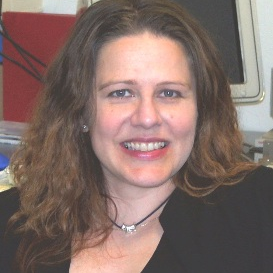Cell Biology Research in Germany: State-of-the-Art and Perspectives in Cellular Pathology
A special issue of Cells (ISSN 2073-4409). This special issue belongs to the section "Cellular Pathology".
Deadline for manuscript submissions: closed (31 December 2023) | Viewed by 6680
Special Issue Editors
Interests: lysosomal storage disorders; vesicular trafficking; endosomal sorting; lysosome biogenesis; mitochondrial diseases; autoimmune disorders
Special Issues, Collections and Topics in MDPI journals
2. Centre for Biostructural Imaging of Neurodegeneration (BIN), University Medical Center Göttingen, Georg August University, Göttingen, Germany
Interests: understanding the pathomechanisms of kidney diseases; investigating therapeutic targets for kidney fibrosis; ER stress proteins and UPR in kidney fibrosis; biomarker discovery and validation
Special Issues, Collections and Topics in MDPI journals
Special Issue Information
Dear Colleagues,
The COVID-19 pandemic not only affected everyday life but also enormously impacted the research community, who were obliged to deal with unexpected situations and face new challenges in their usual laboratory life. The cell biology community in Germany, in a similar manner to their colleagues worldwide, had to adapt and react to this new situation. Despite the challenging COVID-19 pandemic, the German cell biology community achieved pioneering work in the field of cellular pathology during this period. To honor the contribution of this community, we plan to dedicate a Special Issue in our journal Cells to cell biology research in Germany, especially the cellular pathology research conducted under the special conditions of the COVID-19 pandemic. This Special Issue aims to provide an overview of the state-of-the-art achievements in this field in Germany during recent years. We invite and encourage researchers to submit their high-quality research papers that will consolidate our understanding in this area. The Special Issue will publish full research articles and comprehensive reviews. We will be seeking a balance between high-quality review articles and original scientific reports in order to yield a Special Issue of broad interest for the cellular pathology community worldwide. To cover the broad field of cellular pathology the topics of our Special Issue include, but are not limited to, the following research areas: cell structure, cell physiology, cell metabolism, cell movement and motility, cell adhesion, cell biology techniques, omics in cellular pathology, cell growth and differentiation, cell apoptosis, and autophagy.
Prof. Dr. Ritva Tikkanen
Prof. Dr. Hassan Dihazi
Guest Editors
Manuscript Submission Information
Manuscripts should be submitted online at www.mdpi.com by registering and logging in to this website. Once you are registered, click here to go to the submission form. Manuscripts can be submitted until the deadline. All submissions that pass pre-check are peer-reviewed. Accepted papers will be published continuously in the journal (as soon as accepted) and will be listed together on the special issue website. Research articles, review articles as well as short communications are invited. For planned papers, a title and short abstract (about 100 words) can be sent to the Editorial Office for announcement on this website.
Submitted manuscripts should not have been published previously, nor be under consideration for publication elsewhere (except conference proceedings papers). All manuscripts are thoroughly refereed through a single-blind peer-review process. A guide for authors and other relevant information for submission of manuscripts is available on the Instructions for Authors page. Cells is an international peer-reviewed open access semimonthly journal published by MDPI.
Please visit the Instructions for Authors page before submitting a manuscript. The Article Processing Charge (APC) for publication in this open access journal is 2700 CHF (Swiss Francs). Submitted papers should be well formatted and use good English. Authors may use MDPI's English editing service prior to publication or during author revisions.
Keywords
- structural pathology of cells and matrices
- cellular metabolism under pathologic conditions
- cell physiology and pathophysiology
- cellular senescence from physiology to pathology
- normal and pathological cell motility
- cell techniques (cell and tissue culture, isolation and fractionation of cells, immunocytochemistry (ICC), in situ hybridization (ISH), transfection, and optogenetics)
- omics in investigating cellular pathology (transcriptomics, genomics, proteomics, metabolomics, glycomics, lipidomics, interactomics, etc.)
- disorders of cellular growth and differentiation
- genetic disorders







